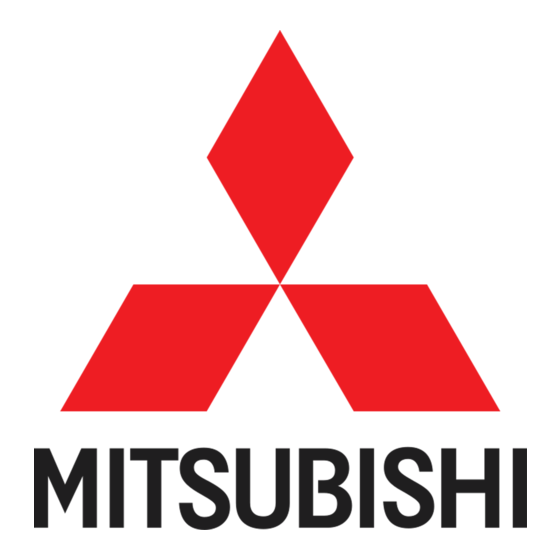
Summarization of Contents
Introduction
About Manuals
Lists related manuals for the AD75 positioning module, including hardware and software operating manuals.
Using This Manual (1)
Explains the symbols used in the manual and indicates values in decimal or hexadecimal format.
Section 1 Product Specifications and Handling
1. Product Outline
Provides an overview of the AD75 positioning control, its features, and system operation flow.
2. System Configuration
Details the general system configuration, applicable CPU modules, and precautions for setting up the AD75.
3. Specifications and Functions
Explains the AD75's general specifications, performance, functions, and I/O interfaces.
4. Installation, Wiring and Maintenance of the Product
Covers important information on precautions, work methods, installation, wiring, and maintenance for the AD75.
Chapter 8 Zero Point Return Control
8.1 Outline of Zero Point Return Control
Explains the two types of zero point return control: machine zero point return and high-speed zero point return.
8.2 Machine Zero Point Return
Details the operation and methods for establishing the machine zero point for positioning.
8.3 High-speed Zero Point Return
Explains the operation of high-speed zero point return using the stored absolute position.
8.4 Positioning to the Zero Point
Explains how to carry out positioning to the zero point using 1-axis linear control (ABS) positioning data.
Chapter 9 Main Positioning Control
9.1 Outline of Main Positioning Controls
Provides an overview of main positioning controls like position, speed, and speed/position changeover controls.
9.2 Setting the Positioning Data
Details the relationship between various controls and the positioning data settings.
9.2.1 Relation between each control and positioning data
Explains how positioning data settings correspond to different control methods.
9.2.3 2-axis linear interpolation control
Explains 2-axis linear interpolation control using two motors for position control in a linear path.
9.2.4 1-axis fixed-dimension feed control
Describes 1-axis fixed-dimension feed control using one motor for axis direction control.
9.2.5 2-axis fixed-dimension feed control (interpolation)
Details 2-axis fixed-dimension feed control with interpolation for axis directions.
9.2.6 2-axis circular interpolation control with auxiliary point designation
Explains 2-axis circular interpolation control using auxiliary points for arc path drawing.
9.2.7 2-axis circular interpolation control with center point designation
Describes 2-axis circular interpolation control using a center point designation for arc paths.
9.2.8 Speed control
Explains speed control where pulses are continuously output for a set speed until a stop command is input.
9.2.9 Speed/position changeover control
Details speed/position changeover control, switching between speed and position control.
9.2.10 Current value change
Explains how to change the current value to a new value using positioning data or a start number.
9.2.11 JUMP command
Describes the JUMP command used to control operation by jumping to a specified positioning data number.
Chapter 10 Advanced Positioning Control
10.1 Outline of Advanced Positioning Control
Introduces advanced positioning control, its data requirements, and execution procedures.
10.3 Setting the Start Block Data
Explains how to set start block data, including its relation to various controls and setting examples.
10.3.2 Block Start (Normal Start)
Details how positioning data groups are executed sequentially in a block start.
10.3.3 Condition Start
Explains how condition data is used to conditionally execute start block data for positioning.
10.3.4 Wait Start
Describes how the control stops and waits until conditions are met for the start block data.
10.3.5 Simultaneous Start
Explains how positioning data for multiple axes can be executed simultaneously.
10.3.6 Stop
Details how control is stopped using the start block data set for 'stop' and how to restart.
10.3.7 Repeated Start (FOR loop)
Explains how to repeatedly execute data between 'FOR loop' and 'NEXT start' based on a set number of times.
10.3.8 Repeated Start (FOR condition)
Describes repeating data based on conditions set in 'condition data' for 'FOR condition' start.
10.4 Setting the Condition Data
Explains how to set condition data, including relations between controls and setting items.
Chapter 11 Manual Control
11.1 Outline of Manual Control
Introduces manual control methods: JOG operation and manual pulse generator operation.
11.2 JOG Operation
Details JOG operation, including its outline, execution procedure, and examples.
11.3 Manual Pulse Generator Operation
Explains manual pulse generator operation, its timing, and required parameters.
Chapter 12 Control Auxiliary Functions
12.1 Outline of Auxiliary Functions
Provides an overview of auxiliary functions that compensate, limit, or add functions to main controls.
12.2 Auxiliary Functions Specifically for Machine Zero Point Returns
Details functions like zero point retry and zero point shift for machine zero point returns.
12.3 Functions for Compensating the Control
Explains functions for compensating control, including backlash, electronic gear, and near pass mode.
12.4 Functions to Limit the Control
Covers functions for limiting control, such as speed, torque, and software/hardware stroke limits.
12.5 Functions to Change the Control Details
Details functions for changing control parameters like speed, override, and acceleration/deceleration times.
12.6 Other Functions
Describes other auxiliary functions like step, skip, M code output, teaching, and command in-position.
Chapter 13 Common Functions
13.1 Outline of Common Functions
Provides an overview of common functions like parameter initialization and execution data backup.
13.2 Parameter Initialization Function
Explains how to reset AD75 parameters to factory-set initial values.
13.3 Execution Data Backup Function
Details how to back up execution data to flash ROM for safety against power failures.
13.4 LED Display Function
Describes how to confirm AD75 status and operation using the LED display and mode switch.
13.5 Clock Data Function
Explains how to utilize PLC CPU clock data in the AD75 for monitoring history data.
Chapter 14 Troubleshooting
14.1 Error and Warning Details
Lists and explains AD75 errors and warnings, including their codes and actions.
14.2 List of Errors
Provides a table of error codes, names, descriptions, and remedies for troubleshooting AD75 issues.
14.3 List of Warnings
Lists warning codes, descriptions, and actions for troubleshooting AD75 warnings.
14.4 Start During Error History
Explains how error history data is copied and monitored on a peripheral device.










Need help?
Do you have a question about the A1SD75P3-S3 and is the answer not in the manual?
Questions and answers